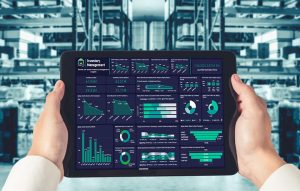The renewable energy industry tends to make assumptions regarding capital planning with solar and wind being intermittent sources. It faces challenges in predicting the percentage increase in efficiency or performance that may lead to a doubling or tripling of demands. Besides, they also require monitoring the resources for optimal utility.
Tableau is a robust platform that enables renewable energy enterprises to use data visualization features to make decisions. This software helps users uniquely visualize their data, keeping up with rapidly changing technology and outperforming their competition.
With Tableau, you can analyze the data for value and keep up with increased performance, reduced downtime and enhanced customer services. Tableau is an efficient platform that helps you to optimize revenue and reduce costs while gaining insights into different areas.
Large power consumers like yours will need to develop strategies to take full advantage of the Tableau dashboard for renewable energy, . This blog post highlights the Tableau platform’s importance for the renewable energy industry through the examples of a few companies.
1. Origin Energy – Australia’s leading integrated energy company
Origin Energy is the leading energy supplier in Australia. The company provides energy to over 4.2 million homes and businesses. This includes power generation, processing, retail and distribution. Origin Energy used Tableau on an enterprise-scale to stay ahead of the competition and create a centralized source of information. This freed up resources for more strategic work.
The lack of reporting and publishing capabilities in real-time impeded the ability of Origin Energy to make timely business decisions. Thus, the business intelligence team was driven by this challenge to look for a solution like Tableau.
Origin Energy is now released from the need to continuously collect figures and verify accuracy by leveraging Tableau energy dashboard. Origin’s entire market focus has undergone a paradigm shift. Manual day-to-day activities are minimized and their processes are accelerated, enabling teams to concentrate on strategic work such as business planning and forecasting. Origin Energy is now powered up with enterprise-wide Tableau adoption by:
- Empowering more than 1,700 users on the cloud using Tableau Server
- Reducing duplication and discrepancies
- Maximizing time for strategic planning

Let your data tell your business story with Tableau
Webinar agenda
- Overview of Tableau and integrations
- Various data visualization trends
- Must have data analytics trends in 2021
- Use cases and live demo
- Present day examples/ case scenarios
- Q & A
2. Siemens – Global company for engineering excellence
Siemens AG has been a global powerhouse of technology for over 170 years. With its global presence, the company focuses on power generation and distribution. Siemens also concentrates on distributed energy systems and process automation in the manufacturing and production industries.
Siemens embraced Tableau data analytics for renewable energy integration and excellent data-driven business continuity. Today, Siemens IT is supported by Tableau to analyze and harness data. Insights are readily available upon request, which previously was time-consuming with the IT team’s time and resources. Additionally, trusted data and drill-down technologies now empower many internal decision-making teams with the power of data through multiple devices. Overall, the renewable energy dashboard helped Siemens to boost operational efficiencies and streamline internal processes through incredible visual analytics.
With Tableau, Siemens acquired a deeper understanding of IT service expenses, usage and customer satisfaction:
- Rapid analysis of more than 7 billion rows across 200+ data sources
- Integration with ServiceNow allows a better understanding of IT services
- Transparent and interactive dashboards support management decisions
Learn more about how businesses benefit from Tableau integration by reading this blog. The blog details how different Tableau products like Tableau Desktop, Prep, Online and Server are helpful for any business.
3. EDF – UK’s largest electricity supplier
EDF is the largest low-carbon energy producer in the UK and the largest provider of electricity by volume in the world, powering more than 5.5 million homes and businesses. Huge quantities of data were collected across the organization, but to extract real value from it, they did not have the right tools in place. They required a new renewable energy data analytics tool that could unlock this value on a day-to-day basis and make it more available. They went through an iterate process, shifting employees’ mindset as a whole, encouraging them to see it as a strategic tool rather than being afraid of it.
Migrating to Tableau allowed EDF to replace 900 manual reports with 13 central Tableau dashboards. These dashboards provide insights into key HR operations fields. Once they had Tableau, they could see their end goals. EDF now makes informed, data-driven decisions across its organization, benefiting from the below advantages:
- The comprehensive security features offer complete control over data access
- Self-service analytics cut demands for ad-hoc reporting by more than 50%
- Entry to essential data insights enhances organizational effectiveness
The closing thought
With the use of Tableau proliferation in the growing organization, working and collaborating with rich data visualization is expected to become a common practice in the renewable energy industry. If you wish to leverage Tableau’s analytic capabilities, get in touch with our Tableau consultant and discuss your project.









